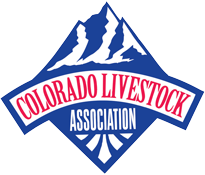Antibiotic resistance expert, Dr. Mike Apley, gives an outlook on what lies ahead for the livestock industry.
Dr. Michael Apley, PhD, Kansas State University
Regardless of how much science is behind the intense scrutiny of antibiotics in agriculture, it is clear that we can expect changes in the future. By now, everyone should be well aware that the use of medically important antibiotics in feed (e.g., tylosin, chlortetracycline) will require veterinary authorization in the form of a veterinary feed directive as of January 1, 2017. You should be in the planning phases with your veterinarian as to having those VFDs in hand and ready by this date. The new labels will be rolled out in sequence in December of 2016, and then the VFDs can be written. This authorization will also be necessary for medically important antibiotics in mineral and milk replacer. Feed drugs which are not medically important, such as decoquinate (Deccox®), amprolium (Corid®), and monensin (Rumensin®) will only need to be on a VFD if fed at the same time as a medically important antibiotic, otherwise no VFD will be required for them. Producers, veterinarians, and feed distributors will need to work together as we move forward.
The FDA Center for Veterinary Medicine (FDA/CVM) has been getting a lot of input about concerns related to medically important antibiotics fed for control or prevention of disease without a defined duration of feeding on the label. The FDA/CVM has indicated that they will be taking steps to evaluate labels with these characteristics, such as tylosin used in feedlots for reduction of liver abscesses. We can expect more activity on this issue after the dust settles from the implementation of the VFD processing.
Another big change in the future will be transparency of antibiotic use in food animal production. The broiler industry will soon have a report out on their antibiotic use across the industry, and it is reasonable to conclude that the other food animal industries will need to keep pace and also provide some accurate estimates of use. We can anticipate that these reports would focus on the medically important drugs related to reasons for use.
Antibiotics are clearly something that we as a society have an interest in preserving as an effective tool for treating disease in both animals and humans. This goal may result in some legislative and regulatory initiatives designed to protect antibiotics, and some of these may move beyond the scientific evidence with a precautionary approach in the name of public health. It is very important that food animal veterinary and producer groups stay involved to make sure that valuable tools aren’t thrown out in the name of human health, when in fact they may be beneficial to both animal and human health. Advancements in genetic analysis of bacteria are allowing us to better understand how bacteria and resistance genes move in animals, humans, and the environment. However, it is unlikely that these techniques will give us a definitive answer in the near future. All we can be certain of is increased scrutiny of antibiotic uses in food animal agriculture.
